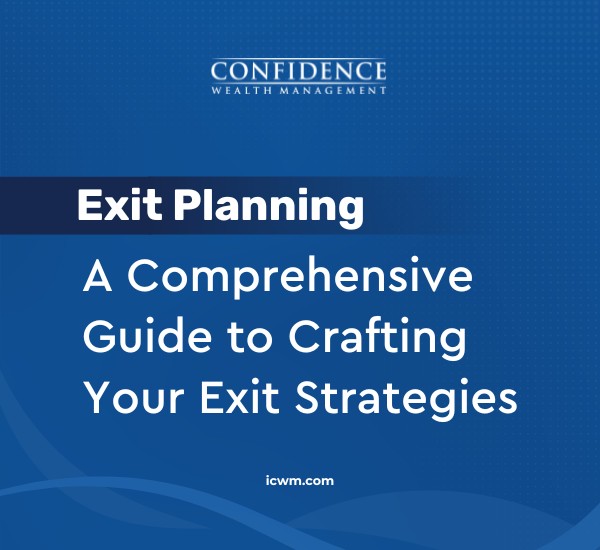There’s no shortage of DIY investing advice online, especially with what’s going on in the market. Unfortunately, a lot of this advice can be confusing because they express opposing viewpoints or introduce complex ideas without expressing the foundations they’re built on.
For example, you aren’t proficient in driving without first learning some key principles like staying aware of your surroundings and being a defensive driver.
The same is true of investing.
Before you try to tackle complex ideas or decipher opposing viewpoints about the market, you should build a strong foundation based on smart principles.
This blog features five such principles that can help you understand what it takes to create an investment portfolio that’s designed to pursue your investment goals.
There are others beyond these five, but these are a great starting point to get the basics in mind and break the cycle of buying high and selling low that so many investors get trapped in.
Now, let’s get into five smart investing principles you can learn to thrive in the market.
1. Estimate Your Time Horizon
Buying into the market without knowing how long you’re planning to stay is like getting onto a freeway without having a map.
You’ll probably end up somewhere new, but you’re unlikely to enjoy where you end up.
So you need to come up with a time horizon or a plan for how long you want to stay in the market. How should you decide that?
In general, a short time horizon is anything less than four years, a mid-term time horizon is around five years, and a long time horizon is ten or more years.
The shorter your time horizon, the more susceptible you are to volatility. Which is just a fancy way of saying that the less time you’re in, the more exposed you are to prices going up and down.
This means that if you want to protect your money, it’s generally a good idea to be more conservative and plan for a shorter time horizon. Since longer-term investments have more time to recover from downswings, it can pay to be more aggressive.
Deciding how conservative or aggressive you want to be leads us to our next principle.
2. Know Your Risk Profile
It’s easy to say, “I can handle a high level of risk” when the market is going up, but before you take aggressive positions, it’s a good idea to ask yourself some pointed questions and be honest with yourself about the answers.
- What happens to your outlook if the market drops?
- How much are you prepared to lose and still stay invested?
- How would I describe my investment knowledge?
- Keep in mind, there are a lot of outlets for financial information, they are not all created equal.
Investment risk can be managed, but it can’t be eliminated. Every investment carries some risk, and it’s usually tied to the potential reward.
Different investments inevitably have different risk profiles. Here are some examples of different investment options:
- Cash alternatives such as certificates of deposit (CDs) are the lowest-risk investments.
- Traditional CDs offer a fixed rate of return, whereas both the principal and yield of investment securities will fluctuate with changes in market conditions.
- If you sell before a CD reaches maturity, you may be subject to penalties.
- Debt instruments, such as government bonds, are further up on the risk curve.
- Offer a slightly higher return, but at a slightly higher risk.
- Bond prices, including government bonds, rise and fall daily.
- Stock investments offer the potential for higher returns, but they also have a higher risk.
- The return and principal value of stock prices will fluctuate as market conditions, so shares, when sold, may be worth more or less than their original cost.
- Speculative tools like options contracts and other derivatives are not appropriate for every investor since they carry a high level of risk and, when sold, may have little or no value.
Each of these investments carries more or less risk based on their inherent time horizon and level of trust in the possible payout. But this is not the only form of risk.
There are external risks that may influence the price of a stock or the likelihood of being paid back on a bond. These external risks include economic risk, market risk, interest-rate risk, political risk, and tax risk.
This is a lot to keep in mind, which is why it’s so important to do due diligence on any investment and to know your risk tolerance going in so that you know what you’re prepared to handle.
3. Diversify
Whatever your risk tolerance and time horizon, you want to invest in such a way that you make money while protecting yourself from ruin.
That’s where diversification comes in.
This is the practice of investing across a wide range of categories and companies to spread risk and profit from runs in different areas.
It comes from the idea that a portfolio of different kinds of investments, on average, may potentially yield a higher return and pose less risk than any individual investment.
In principle, when you diversify you want to select investments that have a low correlation with each other. That is investments that don’t tend to behave the same in similar market conditions.
4. Consider Taxes and Inflation
When you look at your possible return on investment, try to calculate what your possible return would be after taxes.
Everything is taxed in America, including your investments, so be sure to factor that in when you consider your time horizon.
Taxes and inflation, or rising prices, are silent thieves if you don’t factor them into your investment plans. Inflation is especially insidious because it can happen slowly, but add up over time.
Things can often change when we’re not looking, but future you will be grateful for keeping taxes and inflation in mind.
5. Don’t Procrastinate. Start Now.
Procrastination can be costly.
If you were to deposit $250,000 in an account earning 6%, at the end of 20 years your account would be worth $801,784.
Wait only five years and the $250,000 would have 15 years to work and would grow to $599,140. Wait ten years and you’ll only end up with $447,712.
Waiting ten years in this example is a $350,000 decision.
If you learn nothing else in this report, please understand the importance of getting started now. When it comes to pursuing investment goals, the more time you have the better.
Conclusion
With these principles in mind, here are some suggestions for how you can go forward:
- Put together a personal income statement. Identify all your sources of income and where your money is going.
- Put together a balance sheet. This should give you a good sense of your assets and liabilities.
- Identify your time horizon.
- Be honest with yourself about your risk tolerance. Don’t bite off more than you can chew.
- Consider talking to a financial advisor. It can be a huge help having someone well-versed in the markets advise you in your decisions moving forward.
As experienced financial professionals, we help clients like you figure out the best retirement plan for their situation, so that when they’re ready they can retire gracefully with peace of mind.
Please connect with us and let us help you plan for your dream retirement. We would be delighted to go on the journey with you.










